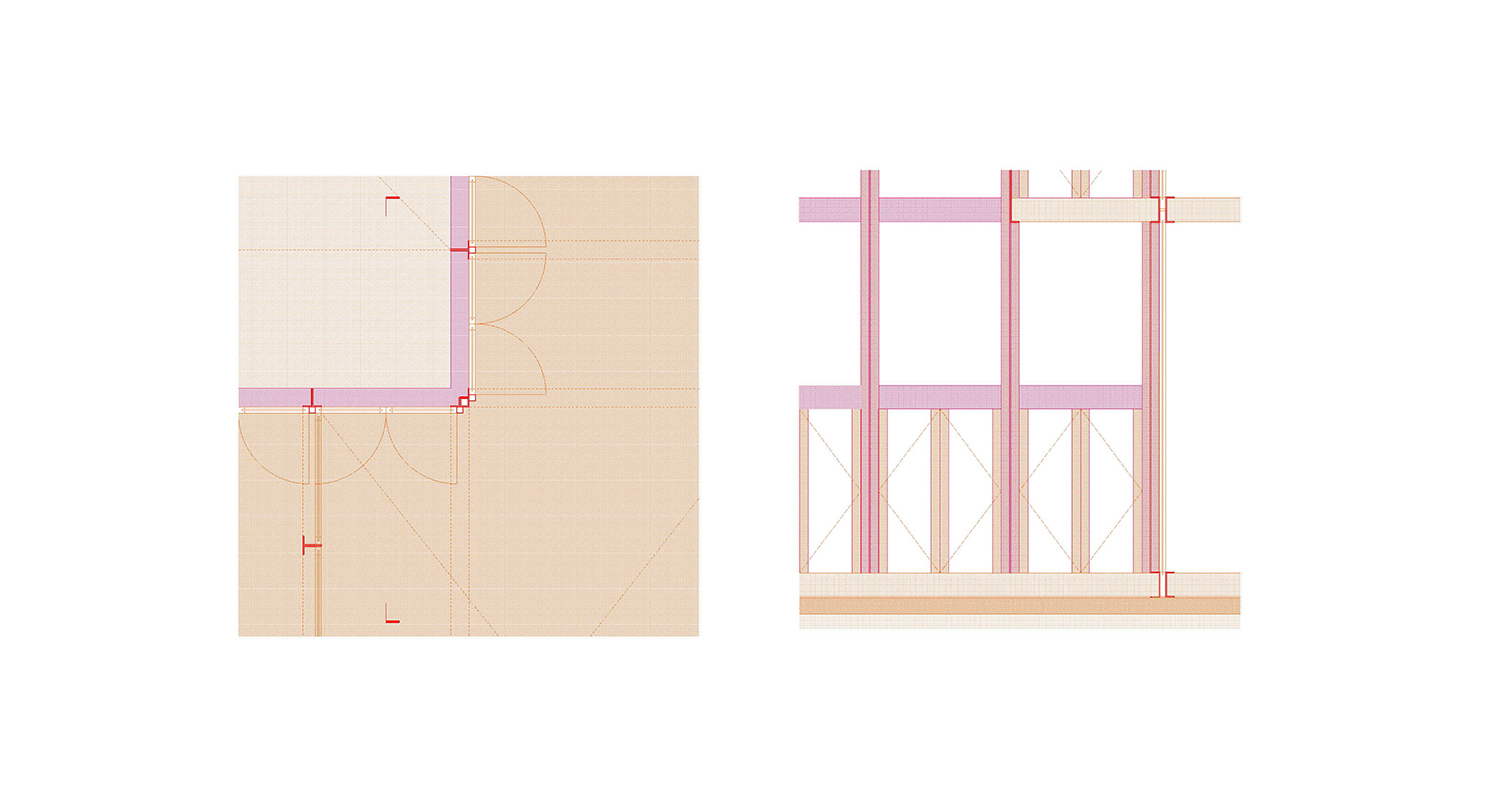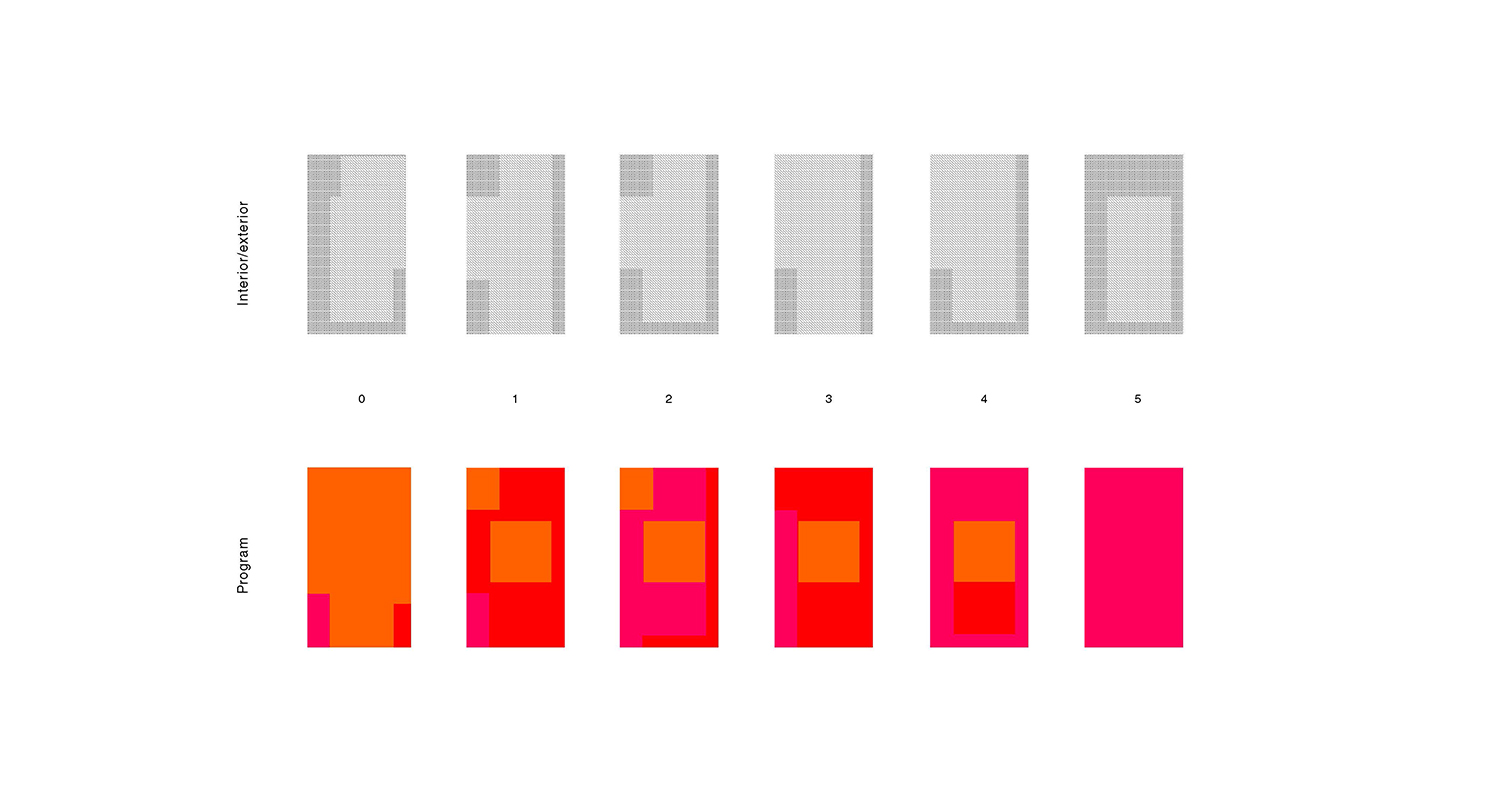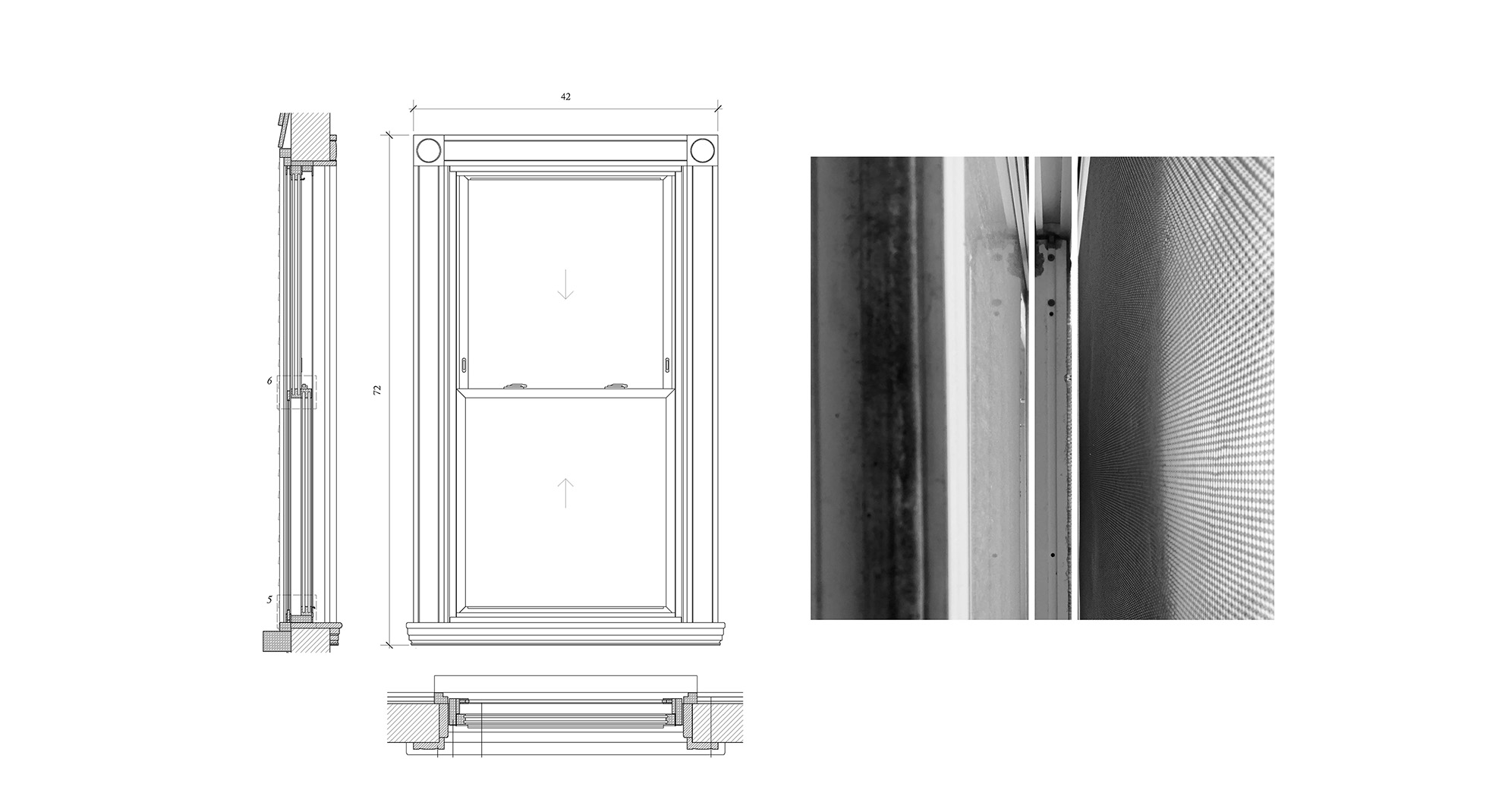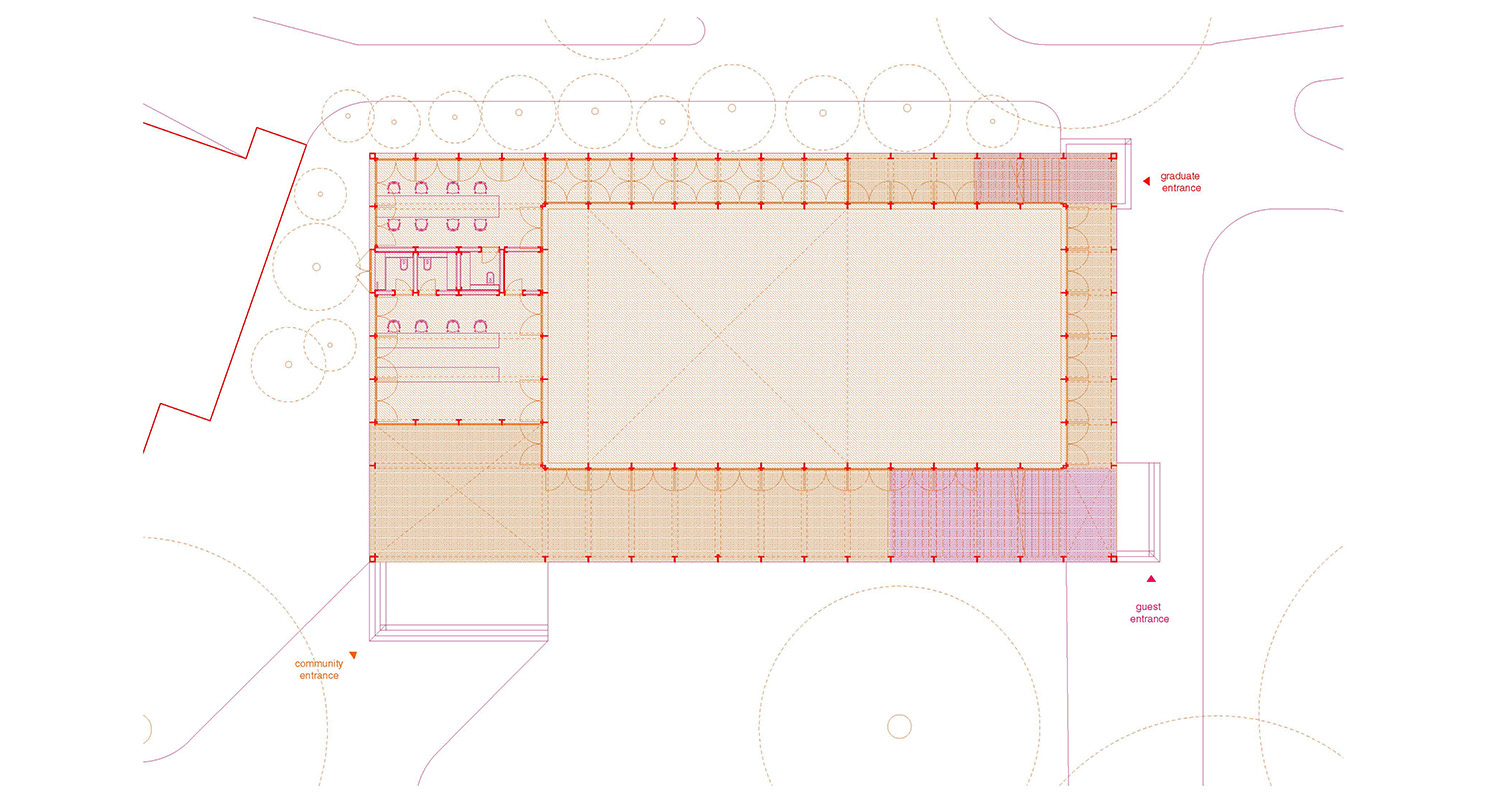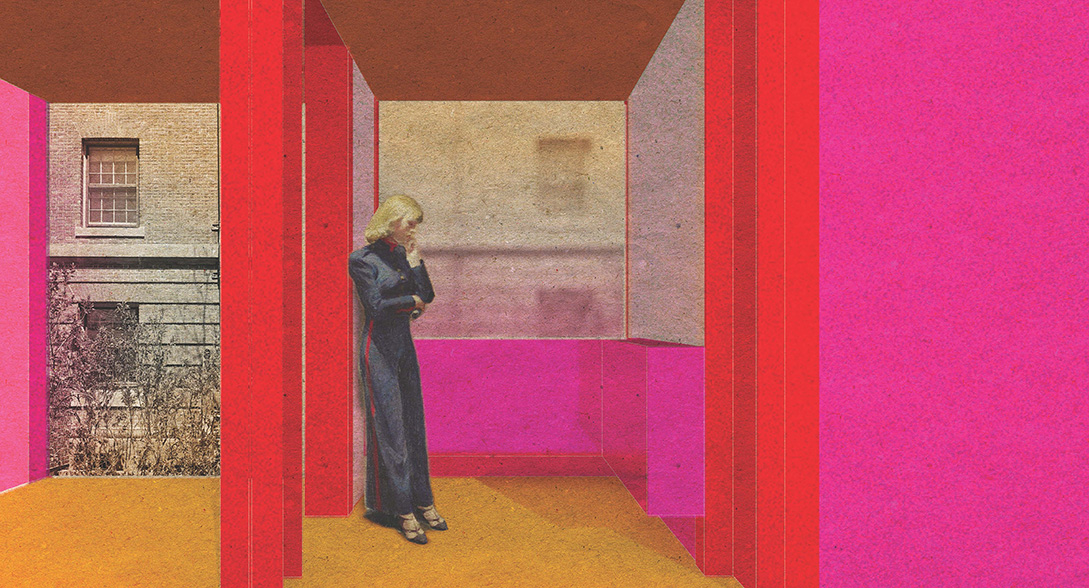Meeting House: Using the Window as a Generator of Interstitial Space
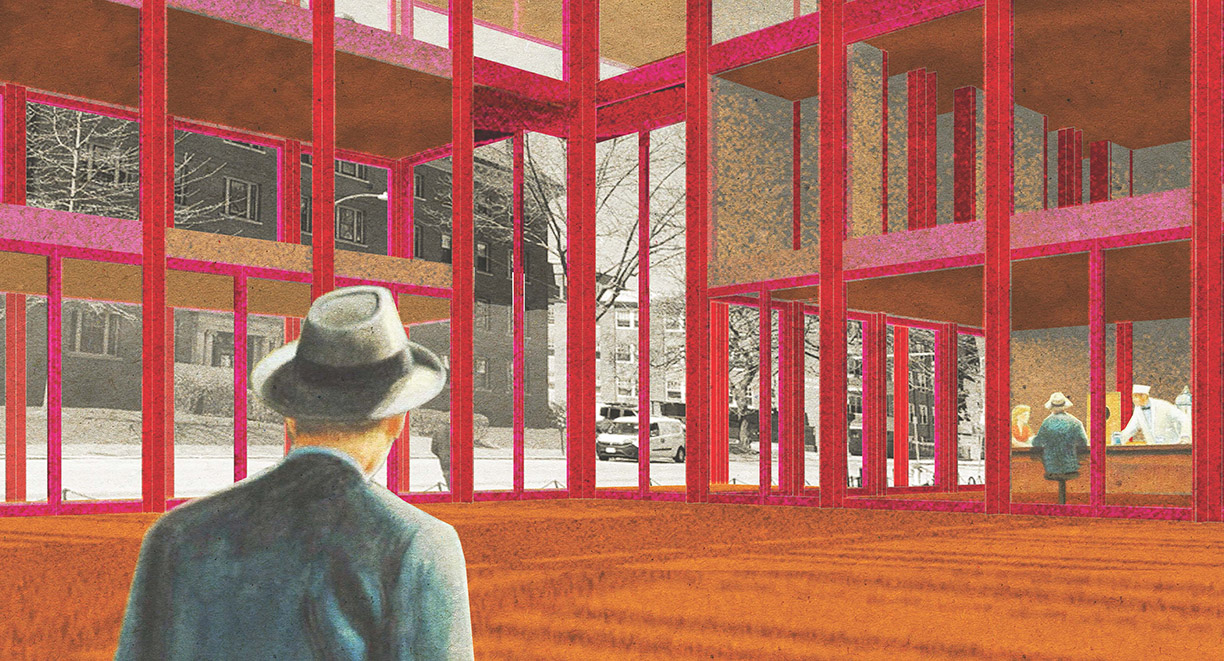
by Sonya Falkovskaia (MArch I ’23)
“Meeting House: Using the Window as a Generator of Interstitial Space” explores how a changing depth of facade can act as a mediator of varied interior environments. The window is our primary connection to the outside world when existing within buildings. This project experiments with what the window can come to represent and how it changes our engagement between internal and external space.
Much like the layers of a window, there is interstitial space that contributes to how we perceive these two fundamental elements. This building aims to take the principle of layers within a window and apply them to the building, turning the whole facade into one cohesive window mechanism.
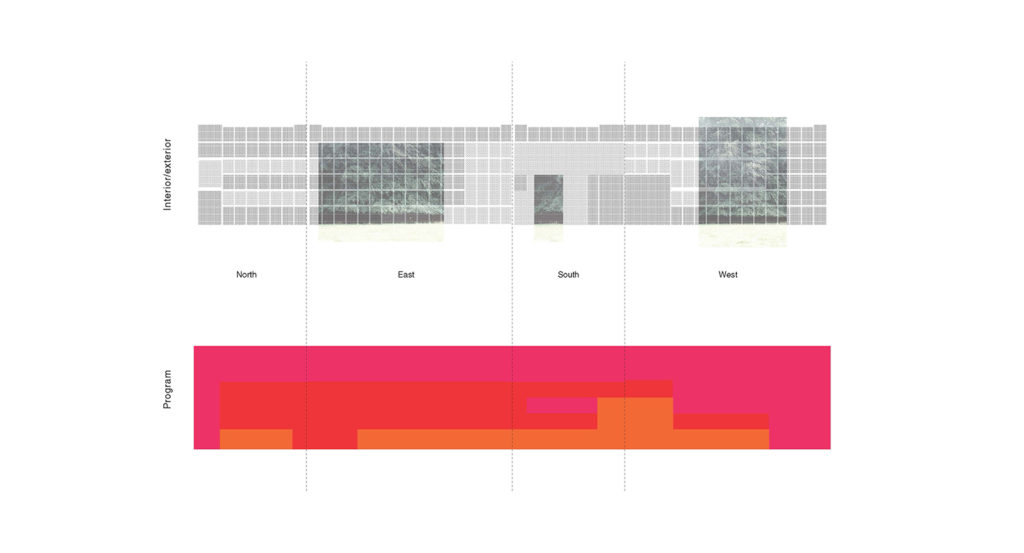
The project proposes a clubhouse for the Harvard campus, consisting of three houses: a community house, a guest house, and a graduate house. The three houses are intertwined to produce one place where each of the three groups across Harvard’s campus can connect.
Within each house, there are three scales of room. The smallest module of the room is used to build the rest of the building. Each scale contains a fragment of the concept that gets compounded when reading the building as a whole. The building is created by an enveloping thick facade that wraps around to create a void within. The facade is folded both in plan and section. By using this folded surface, light and air are maximized.
